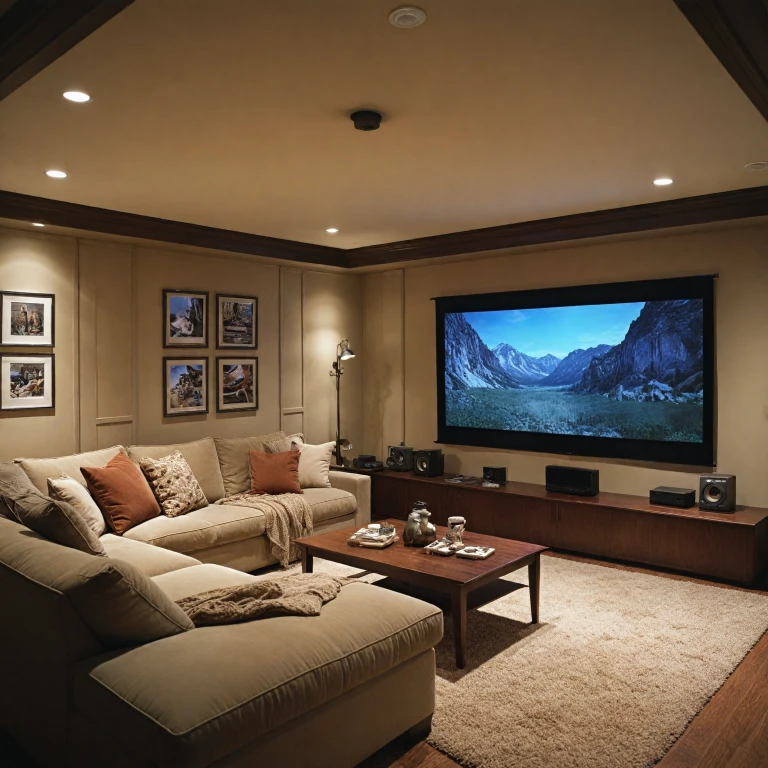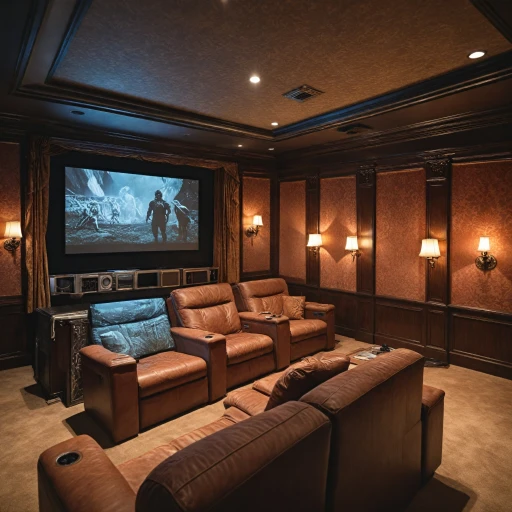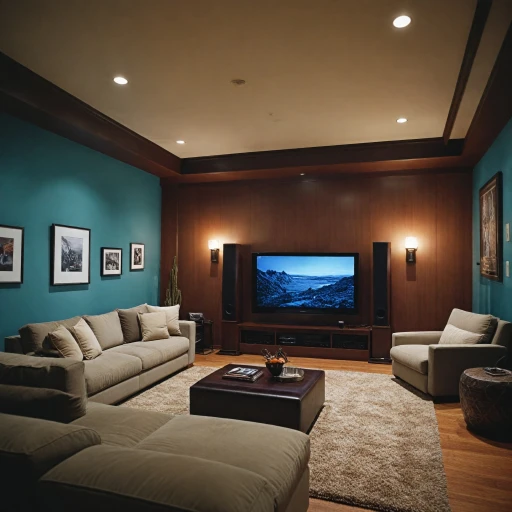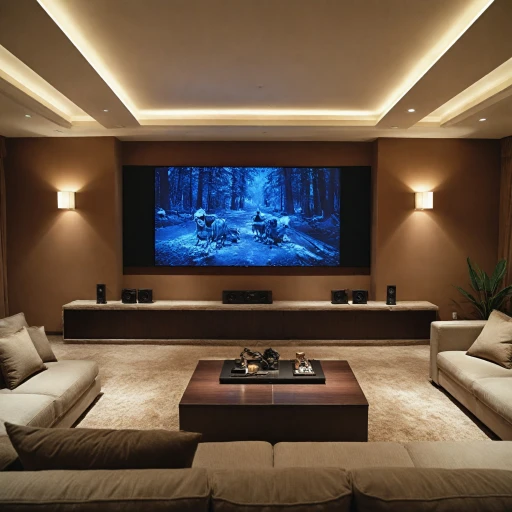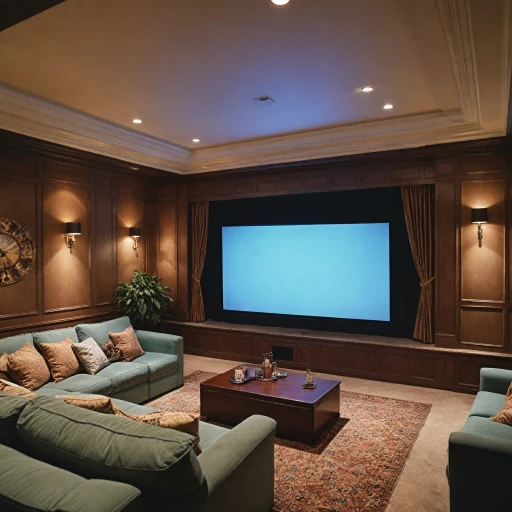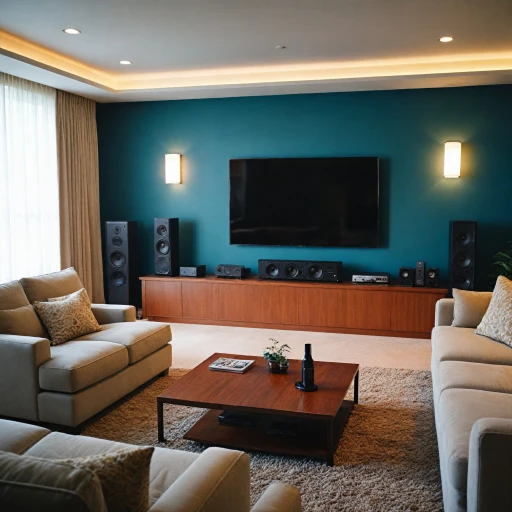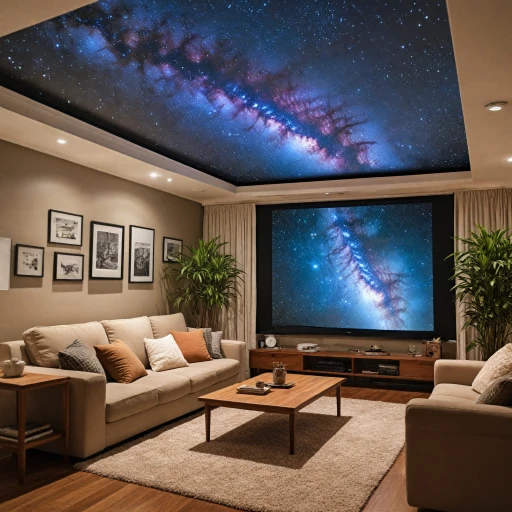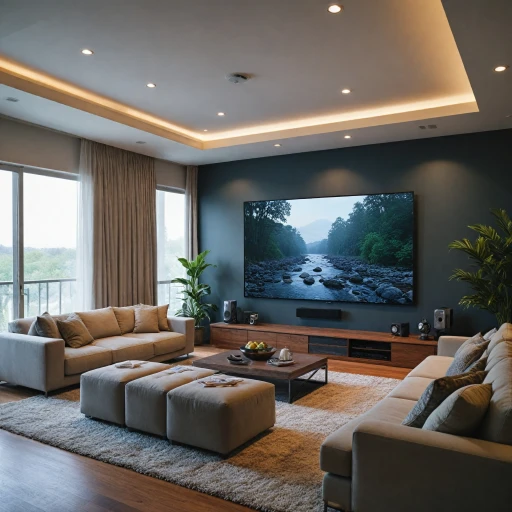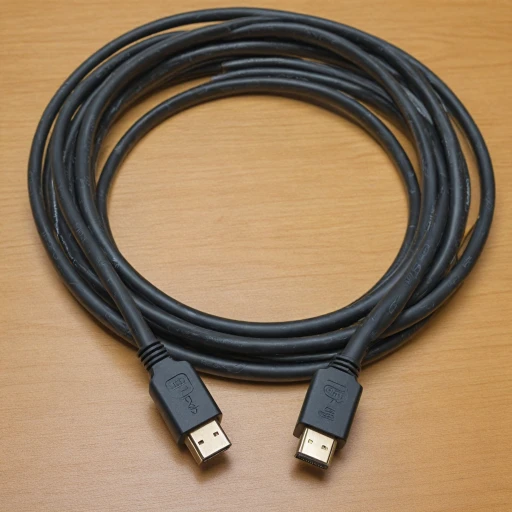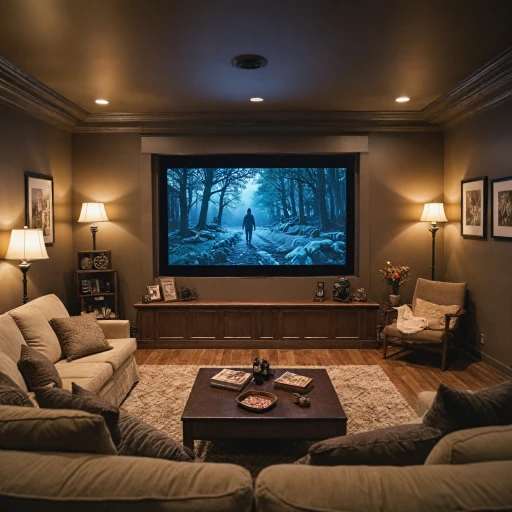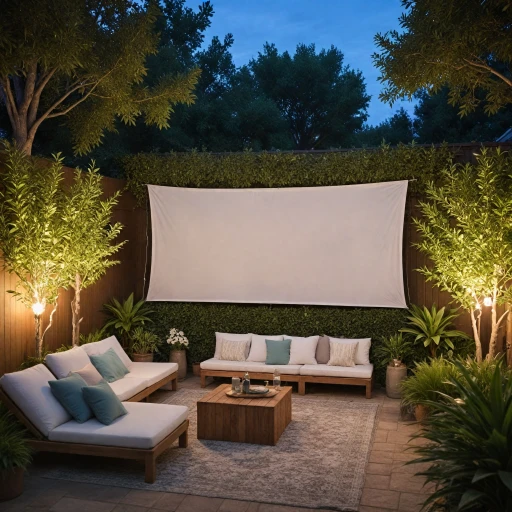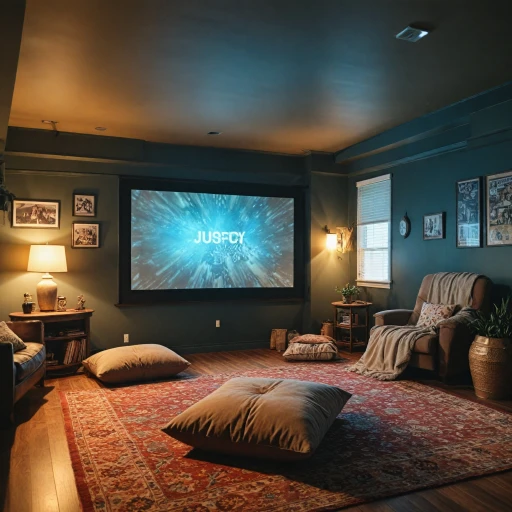
Understanding the Benefits of a Retractable Projector Screen
Discover the Advantages of a Flexible Movie Screen
When setting up a home theater, opting for a retractable projector screen can offer several compelling benefits that enhance both your viewing pleasure and your living space’s versatility. Let’s delve into why these screens have gained popularity among home theater enthusiasts. First, retractable screens provide unmatched flexibility. Whether you choose a motorized or a manual pull-down model, these screens effortlessly adapt to the layout and size of your room. You can easily raise or lower the screen when needed, thus maintaining the room’s functionality without compromising your media setup. Moreover, these screens help tackle the challenge of space management. Unlike fixed-frame models, which take up permanent space, a retractable projection screen can be discreetly stowed away when not in use, freeing up the room for other activities. Retractable screens also stand out for their ability to enhance the overall viewing experience. Premium products like elite screens or professional electrol options offer tensioned surfaces that prevent sagging, ensuring a perfectly flat display. This means when the screen is paired with a suitable projector, such as a short throw or standard model, you’re guaranteed sharp, high-quality images every movie night. For those considering their budget, the price range of retractable screens can accommodate various preferences without breaking the bank. Whether you're looking for an entry-level product or an advanced option with more features like ambient light rejection, there's a screen that matches both your financial and viewing needs. Lastly, don’t underestimate the aesthetic appeal. With options like matte white finishes, your screen can complement your home decor while hiding unsightly cables or components when retracted. For more insights on multipurpose screen options and comparisons with fixed projector screens, visit this guide on choosing between grey and white screens. This resource can further guide you in making the best choice based on your specific environment and viewing preferences.Choosing the Right Screen Material
Selecting the Best Material for Your Projector Screen Needs
Choosing the right material for your retractable projector screen is crucial to optimize your home theater experience. Various materials can impact the image quality, depending on factors like projector type, room lighting conditions, and your specific viewing preferences.- Matte White Surface: This is a popular choice for its ability to diffuse light uniformly, offering a wide viewing angle, which is perfect for accommodating guests at movie nights. Matte white screens work well with most projectors, particularly in rooms with controlled lighting.
- Gray or High Contrast Screens: If your setup is in a room with ambient light, a gray screen can enhance image contrast, absorbing some ambient light while maintaining vibrant picture quality. This is a suitable option for settings where perfect control over lighting isn't possible.
- Tensioned Projection Screens: To avoid image distortion, consider investing in tensioned diag matte screens. They maintain a flat viewing surface, minimizing any waves or curls that can occur over time, ensuring consistent image quality.
- Consideration of Screen Size and Material Type: For larger screens, especially those over 100 inches, stability and material resilience become paramount. High-quality products like professional electrol and elite screens provide options in fixed frame and motorized variants, offering excellent durability and performance.
Installation Tips for a Seamless Setup
Getting the Perfect Setup for Your Retractable Screen
Installing a retractable projector screen can seem daunting, but with the right approach, it can be a straightforward process. Whether you choose a manual pull down or a motorized version, ensuring a seamless setup is key to enhancing your home theater experience. Here are some tips to help you get started:
- Choose the Right Location: The first step is selecting the ideal spot for your screen. Consider the amount of ambient light in the room, as it can affect the image quality. A matte white screen is often recommended for rooms with controlled lighting.
- Measure Accurately: Before purchasing, measure the space to ensure the screen fits perfectly. Consider the drop down length and the size of your projector screens, typically available in various inch options, to match your room's dimensions.
- Secure Mounting: Whether you opt for a ceiling mount or a wall mount, ensure that the screen is securely installed. A tensioned diag screen, for example, can help maintain a flat surface, minimizing any distortion during projection.
- Consider the Type of Screen: For a professional touch, an electrol diag or elite screens model might be worth the investment. These often come with a fixed frame or are tensioned for a smoother surface.
- Test the Mechanism: If you choose a motorized screen, test the motor function several times to ensure it operates smoothly. Manual pull down screens should glide easily without sticking.
- Optimize for Your Projector: Pair your screen with a suitable projector. Short throw projectors, for instance, are great for smaller spaces, while a traditional projector might require more distance for optimal image quality.
By following these steps, you'll be well on your way to creating a home theater that rivals the cinema. For more tips on enhancing your audio experience, check out our guide on the best subwoofers.
Optimizing Image Quality with Your Projector
Maximizing Your Viewing Experience with Optimal Image Settings
To truly enjoy your film nights, getting the best picture quality involves fine-tuning your projector settings to match your chosen projector screen. Start by considering the type of projector you're using, whether it's a short throw, lite professional, or professional electrol model. Each type may influence how ambient light impacts the image quality.
- Calibration: Adjust the contrast, brightness, and color settings based on the screen material you've selected. For a matte white screen, ensure your colors are vivid yet natural.
- Keystone Correction: This function helps counter distortion, ensuring a symmetrical and square image, crucial for pull down or drop down screens.
- Resolution Matching: Your projector's resolution should ideally match the native resolution of your movie screen to avoid loss of image clarity.
Adjust your projector to suit both your viewing environment and screen, especially if it's an electrol diag motorized or manual projection screen. Consider how ambient light in your room affects the image during the day versus night. Utilizing a screen stand with a fixed frame can help maintain the consistent positioning necessary for a tensioned diag screen, improving overall clarity.
Don't forget to ensure your setup meets your price expectations, achieving the best balance between quality and cost. A high price lite model doesn't always equate to the best if it's not configured correctly.
Maintaining Your Retractable Projector Screen
Your Screen Maintenance Made Easy
Keeping your home theater projector screen in top condition ensures optimal viewing experiences and extends the lifespan of your investment. Here's how you can maintain various types of screens, whether manual pull-down or motorized.- Regular Dusting: Dust can accumulate on any surface, affecting the clarity of your projected images. A gentle wipe with a microfiber cloth on your matte white screen will help maintain its pristine condition. Avoid using chemical cleaners as they can damage the screen material.
- Inspect the Mechanism: For motorized and manual pull-down screens, regular checks ensure smooth operation. Listen for unusual noises when deploying the screen. If your electrol or tensioned diag series screen doesn't lower or retract smoothly, it might require professional service to adjust the mechanism.
- Avoid Prolonged Exposure to Light: Continuous exposure to ambient light can degrade a projection screen. Draw shades in your theater room to protect the screen and maintain high-quality projection.
- Store with Care: After use, always retract your screen to its casing for protection. For portable setups with a screen stand, ensure it is stored in a dry, cool place to prevent warping or mildew, especially in humid environments.
- Professional Maintenance: For advanced projector screen models like the elite screens with professional electrol technology, consulting with a technician annually can prevent long-term issues and ensure your projection remains as captivating as a movie screen in professional theaters.
Troubleshooting Common Issues
Common Screen Troubles and Solutions
When enjoying your projector screens, encountering a few hiccups is not uncommon. Here's a rundown of some issues you might face and how to resolve them.- Screen not rolling down or retracting: For manual or motorized projector screens, check if the pull mechanism or motor is functioning smoothly. If there's still difficulty, the problem may relate to a jam, so ensure there aren't any obstructions.
- Matte white screen color issues: Ambient light can heavily impact a projection screen. Tweaking light conditions can enhance your viewing experience. Consider investing in a screen with a better tensioned diag feature to counteract light interference.
- Wrinkles and creases on the screen: These can be more pronounced in non-tensioned screens. For a more professional electrol appearance, use a fixed frame option or an elite screens series featuring tension.
- Projection image not filling the screen: If the projected image does not match your pull down screen size, make sure your projector setting aligns with the electrol diag of your screen's dimensions. Short throw projectors can sometimes require fine-tuning with angles.
- Movements or shaking: Faulty installation of your screen stand or the projection screen itself can cause unnecessary movements. Ensure bolts and fixtures are tightly secured.
